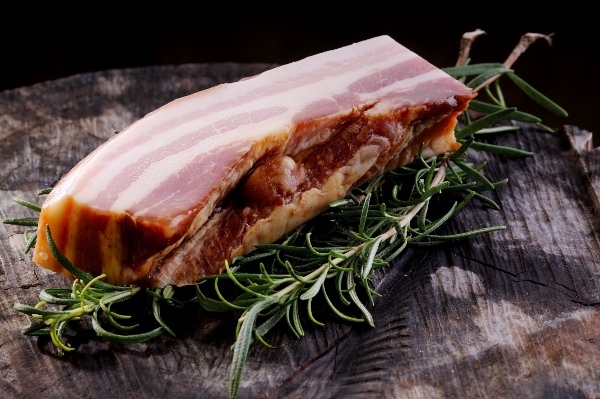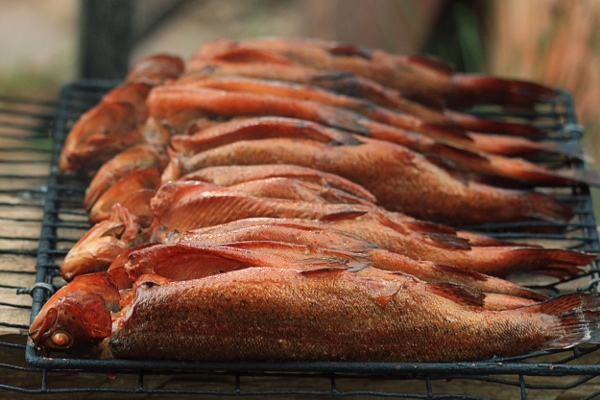Find a butcher with pork bellies (a Chinese butcher probably has them on-hand; if not ask your butcher to order one for you). The ones I purchased from my purveyor had the rind (skin) removed and weighed about 11 pounds. I trimmed off some of the excess fat and cut the belly into four pieces about 2 3/4 pounds (or so) each. The trimmed pork fat makes great cracklings! Read more about making bacon in Mike Stines’ article here.
Ingredients
2 pork bellies (see description above)
Basic Maple Cure (salt should be done by weight and not volume due to the difference in crystal sizes):
3 1/4 tablespoons (2 ounces or 56 grams) coarse kosher salt
1/4 cup dark brown sugar, packed
2 tablespoons coarsely ground black pepper
2 level teaspoons pink salt
5 sprigs fresh thyme (about 1 teaspoon thyme leaves)
4 Turkish bay leaves, crumbled
1/2 cup pure Grade B maple syrup (don’t use imitation)
Instructions
Mix the dry cure ingredients together in a bowl. When well combined stir in the maple syrup. Apply the rub liberally to both surfaces of the bellies. Individually wrap the bellies with food film or place in large food storage bags. Refrigerate the bellies for seven days, turning over every other day. After curing, remove the bellies from the refrigerator and rinse well under cold water. Pat them dry and place the bellies on a cooling rack over a rimmed cookie pan or half sheet pan. Season both sides liberally with your favorite pork rub (one that I use is Super Pig from Savor Spices because it is all natural and contains no corn, soy, wheat or gluten). Coat the bellies with the rub and return the bellies to the refrigerator on a cooling rack over a half sheet pan, uncovered, for one day to allow the meat to become firm and develop a sticky surface known as a pellicle. A pellicle is a slightly tacky, thin, lacquer-like layer that forms on the meat allowing for better smoke absorption. It also helps the meat retain moisture during cooking.
Prepare your smoker for a 225 degree F. cook using maple, apple and hickory wood. Smoke the bellies fat side up for 2 1/2 to three hours or to an internal temperature of 150 degrees F. turning them over halfway through the cook. To monitor the cook I use an iGrill Bluetooth-enabled thermometer that sends information to my iPhone or a Maverick ET-732 wireless thermometer.
I cooked the slabs on both a ceramic cooker using Basque hardwood and a Char-Broil infra-red gas cooker. If you use a gas-fired cooker such as the Heatwave, set it up for indirect cooking and rotate the slabs closer to the heat halfway through the cooking process when you turn the slabs over. On a gas cooker, I use a 12-inch A-Maze-N tube smoker filled with a mixture of BBQr’s Delight pellets. The tube smoker will generate smoke for about four hours using 3/4 pound (2 1/4 cups) of pellets.
Remove the bellies from the smoker and let them cool for at least 30 minutes before slicing. (Partially freezing the bellies will make for easier slicing.)
Pan-fry or oven-roast the cured bacon to the desired degree of doneness. In a 350 degrees F. conventional oven, it’s about 10 minutes per side. You don’t want to overcook the bacon. (Because of the maple cure, this bacon makes excellent “pig candy”.)
The cured and smoked bacon will keep, refrigerated, for one week or frozen for three months if it lasts that long before being eaten!





